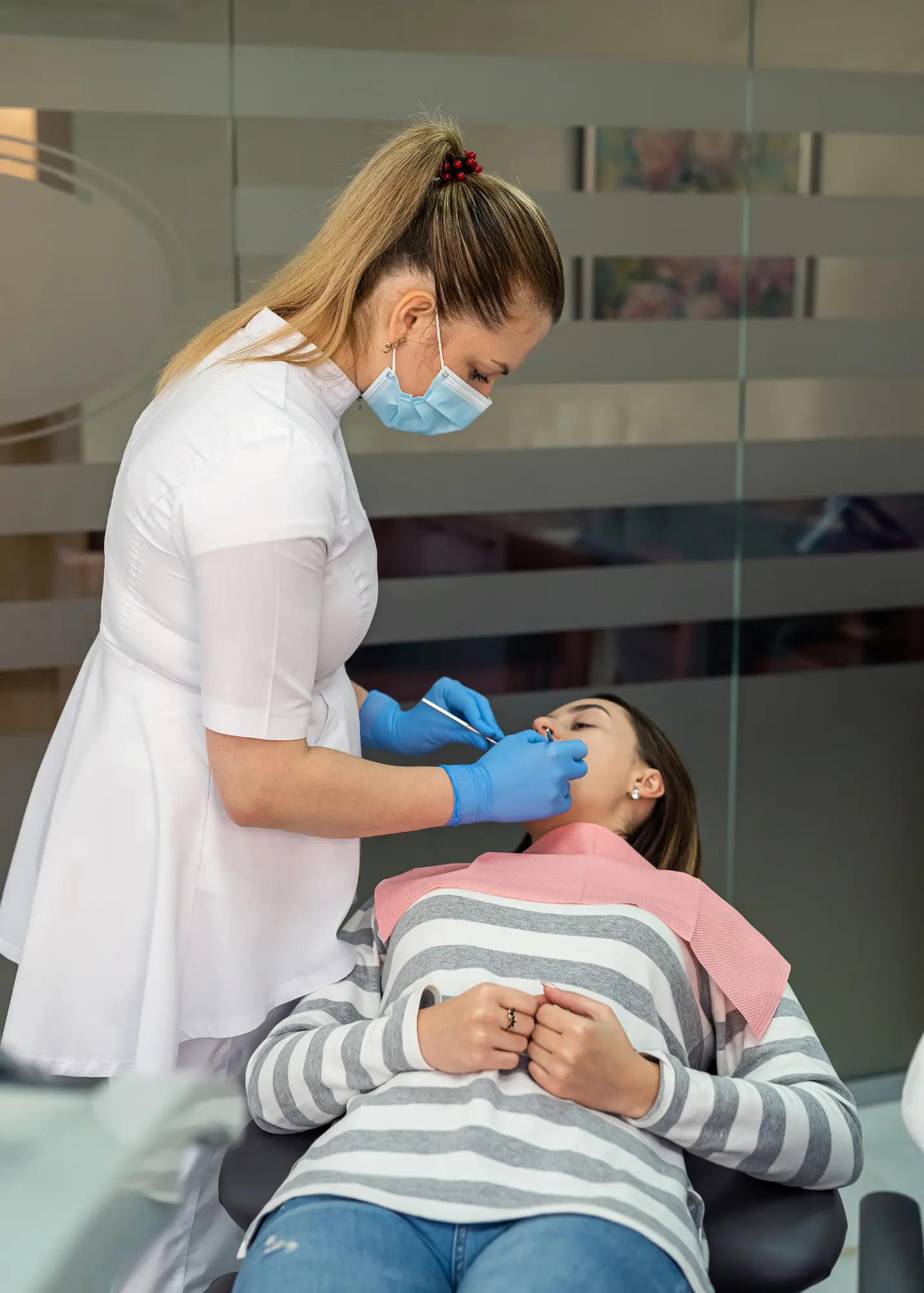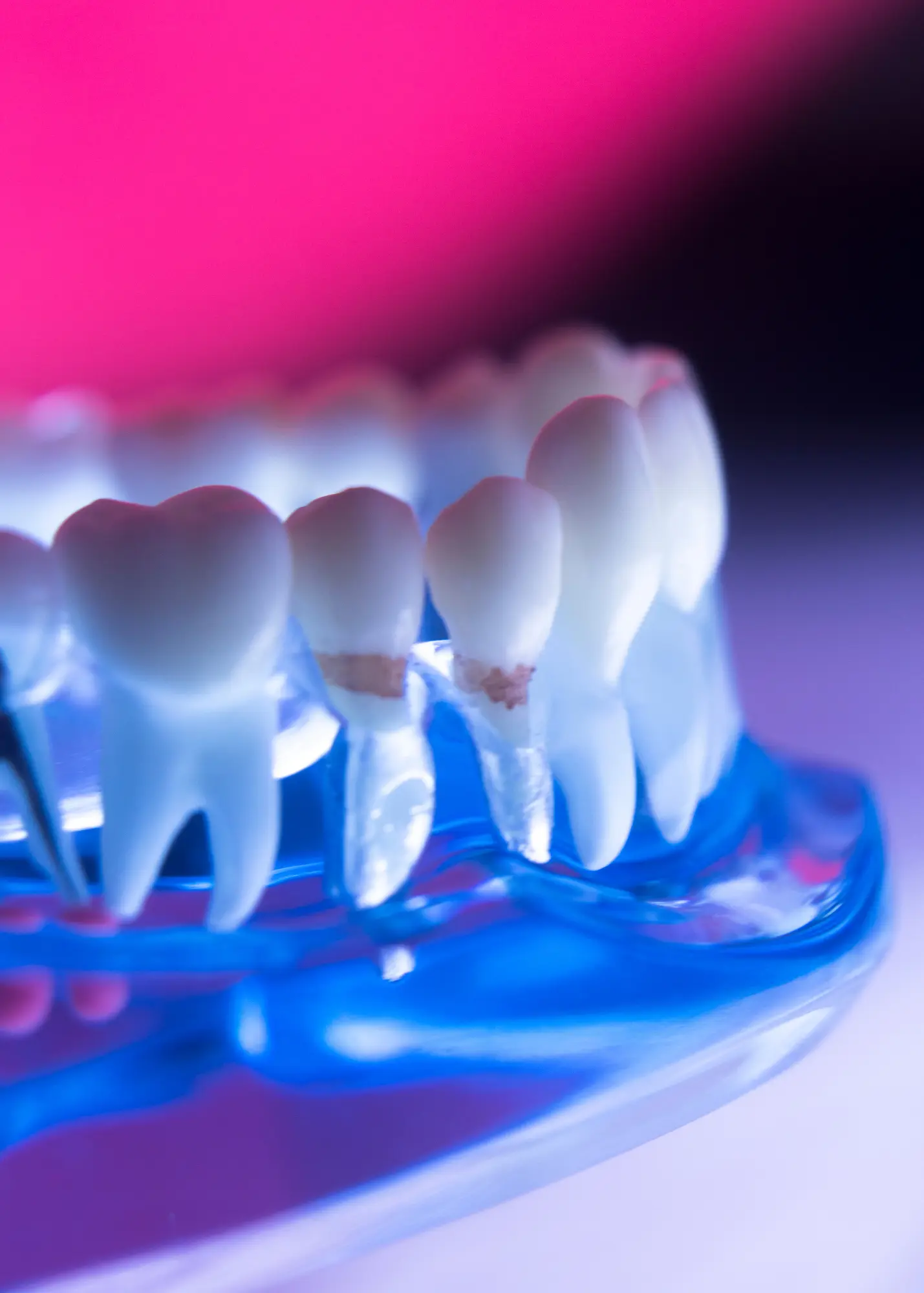Gum disease (also known as periodontitis and pyorrhea) is an inflammatory condition that affects the supporting and surrounding soft tissues of the tooth, eventually affecting the jawbone itself in the disease’s most advanced stages.
The most common precursor to periodontal disease is gingivitis, a bacterial inflammation of the gum tissue. The gums become infected with bacteria when the toxins in plaque begin to irritate and inflame the gum tissues. Once this bacterial infection establishes a colony in the gum pockets between the teeth, it becomes considerably more difficult to remove and treat.
Gum disease can develop slowly and without symptoms, but if it’s left untreated, it can lead to serious health problems. Fortunately, we have an assortment of items that can help you maintain healthy gums and beautiful teeth.
Warning Signs and Symptoms of Periodontal Disease
- When teeth and gums are brushed and flossed, they bleed
- Loose or wobbly teeth
- Teeth suddenly look longer
- History of previous gum problems
Treating Gum Disease
Methods of periodontal treatment vary based on the nature and severity of the disease. The Garden Valley Team and Dr. Antolin will assess the presence of periodontal disease and prescribe the most effective gum therapy and treatment.
What is Gum Therapy?
Gum therapy, also known as periodontal therapy, involves a series of treatments aimed at controlling and eliminating gum disease. This can include deep cleaning (scaling and root planing), medications, and sometimes surgical procedures.
What Happens During Gum Therapy?
During a typical gum therapy procedure, the dentist will clean below the gum line to remove plaque and tartar that have built up. This deep cleaning helps to eliminate bacteria and prevent further damage. In some cases, additional treatments like antibiotics or surgery may be necessary.
How Long Does Gum Treatment Take to Heal?
The healing time for gum treatment can vary depending on the severity of the disease and the type of treatment performed. Generally, you can expect some improvement within a few days, but complete healing can take several weeks. It’s important to follow your dentist’s aftercare instructions to ensure the best results.
What to Do After Gum Therapy
After gum therapy, maintaining good oral hygiene is important. This includes brushing and flossing regularly, using mouthwash as recommended, and attending follow-up appointments with your dentist. Avoiding smoking and maintaining a healthy diet can also support your recovery and overall gum health.
What to Do After Gum Therapy
After gum therapy, maintaining good oral hygiene is crucial. This includes brushing and flossing regularly, using mouthwash as recommended, and attending follow-up appointments with your dentist. Avoiding smoking and maintaining a healthy diet can also support your recovery and overall gum health.
By staying informed about gum therapy and taking proactive steps to care for your gums, you can enjoy a healthy, beautiful smile for years to come.


